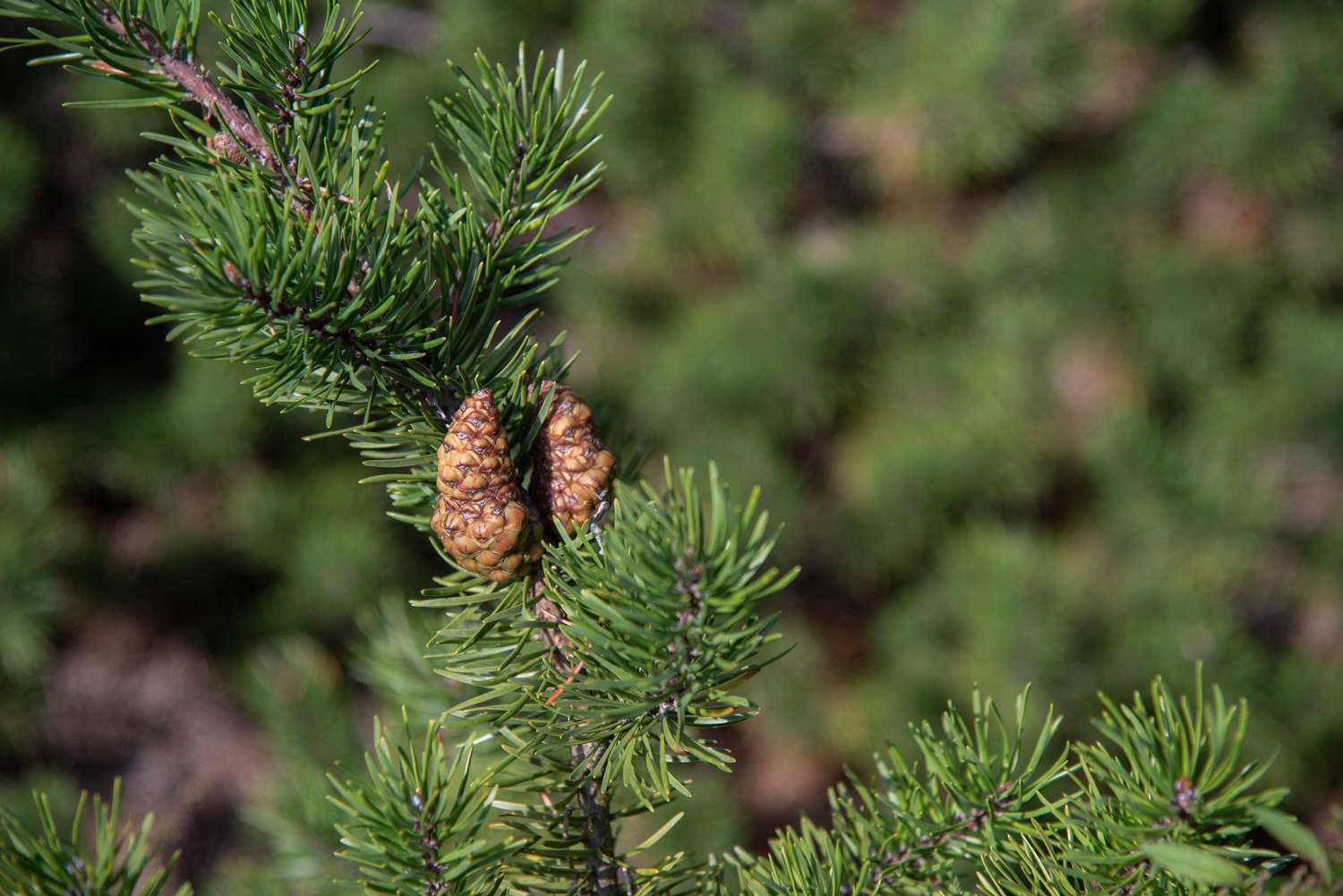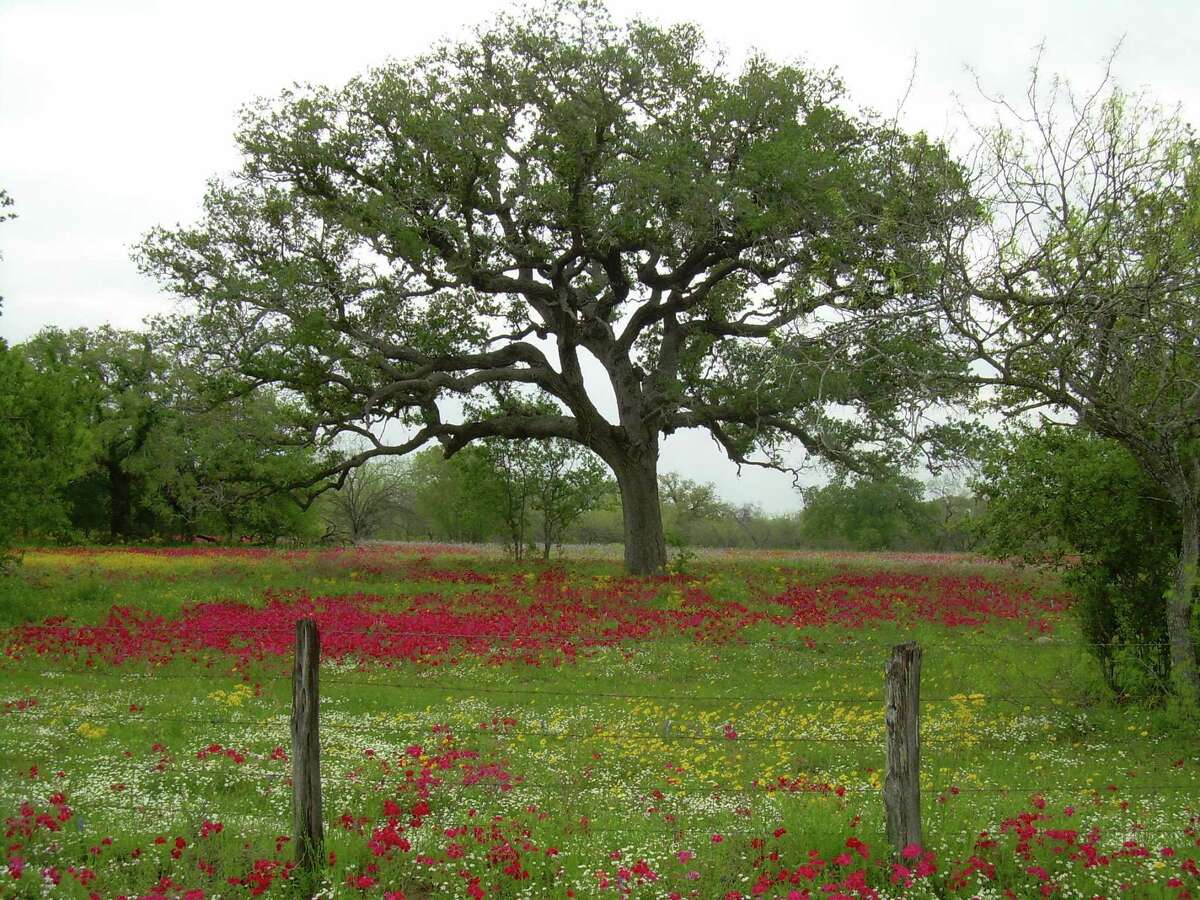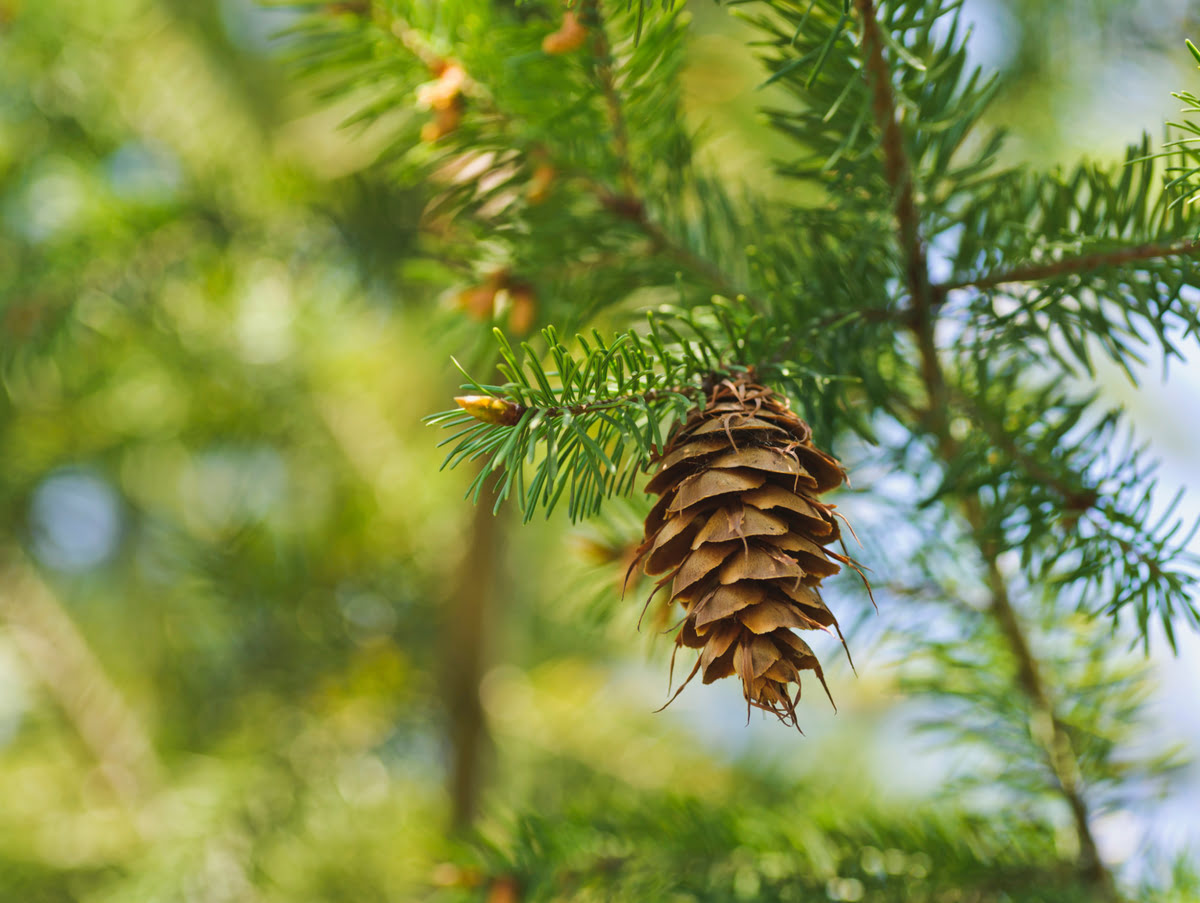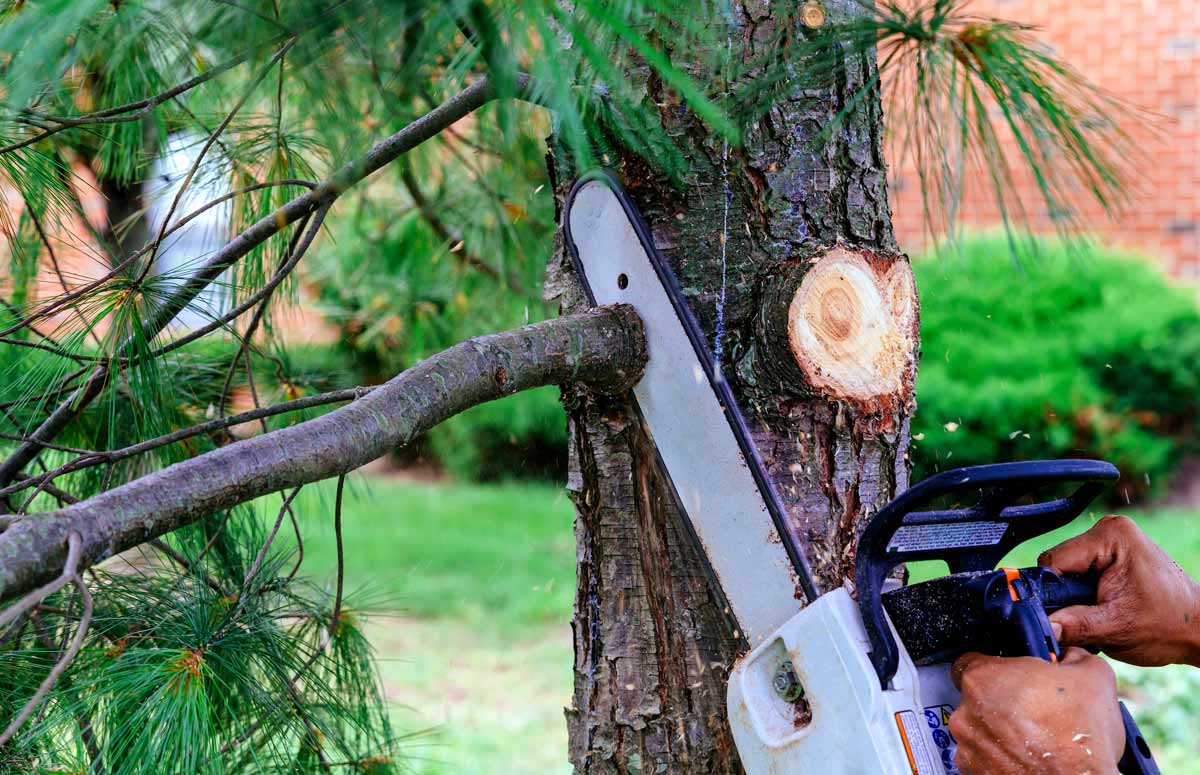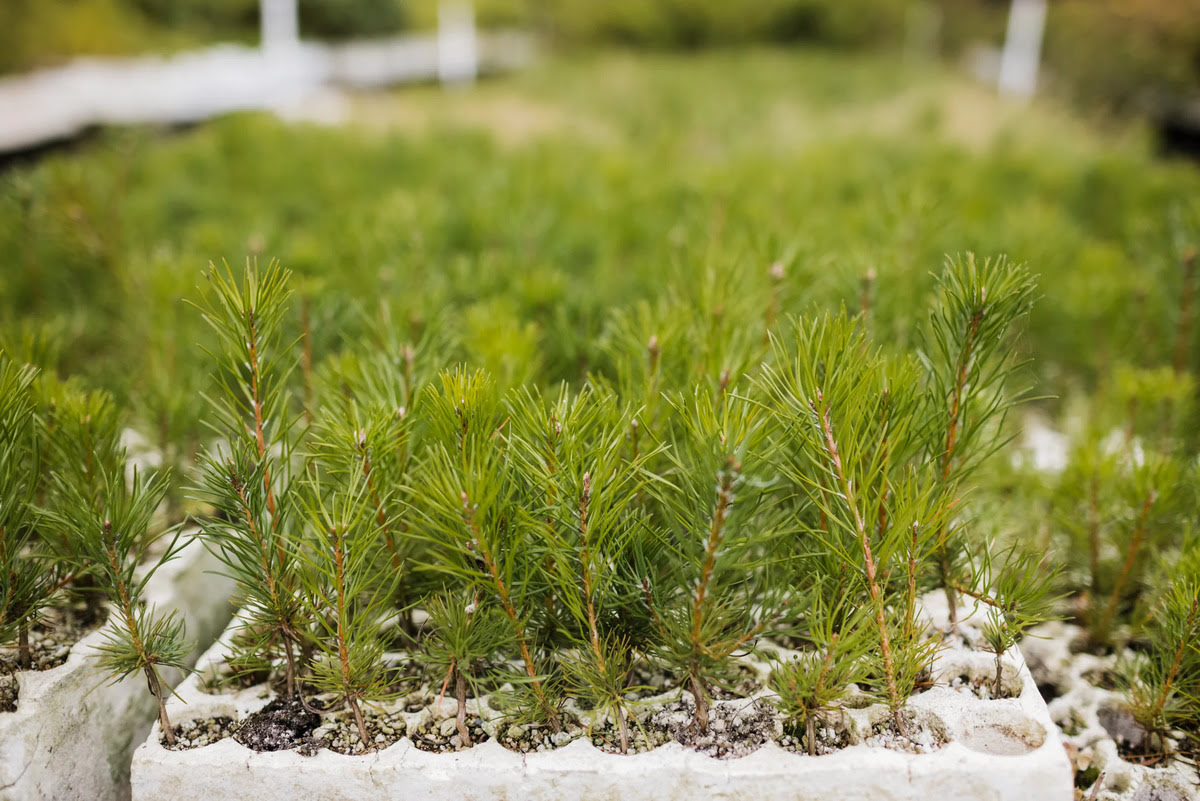Home>Gardening Tips and Tricks>Eco-Friendly Gardening>What To Grow Under Pine Tree In Permaculture


Eco-Friendly Gardening
What To Grow Under Pine Tree In Permaculture
Published: February 16, 2024
Discover eco-friendly gardening tips for growing under pine trees in permaculture. Learn what to plant and how to create a sustainable garden ecosystem.
(Many of the links in this article redirect to a specific reviewed product. Your purchase of these products through affiliate links helps to generate commission for Chicagolandgardening.com, at no extra cost. Learn more)
Table of Contents
Introduction
Introduction
When it comes to sustainable gardening practices, permaculture stands out as a holistic approach that harmonizes with nature's principles. In the realm of permaculture, the concept of growing under pine trees presents an intriguing venture. This article delves into the nuances of cultivating a thriving ecosystem beneath these majestic trees within the framework of permaculture.
The unique microclimate created by pine trees offers a canvas for innovative gardening, embracing the interplay of light, shade, and acidic soil. By understanding the intricacies of permaculture and the specific considerations for pine tree environments, gardeners can harness the potential for an abundant and diverse landscape.
Exploring the symbiotic relationships between plants and the surrounding environment is fundamental to permaculture. This approach fosters a resilient and self-sustaining ecosystem, embodying the ethos of working with, rather than against, nature. As we embark on this journey into the realm of permaculture under pine trees, we uncover the opportunities, benefits, and considerations that define this unique gardening endeavor.
Understanding Permaculture
Permaculture, a portmanteau of “permanent agriculture,” embodies a design system that integrates human habitats and agriculture in a sustainable and regenerative manner. At its core, permaculture seeks to emulate the patterns and relationships found in natural ecosystems, aiming to create harmonious and productive environments for both humans and wildlife.
Central to permaculture is the principle of working with nature, rather than against it. This approach entails observing and understanding the natural processes at play within a given environment, and then leveraging this knowledge to create resilient and productive systems. By mimicking the diversity, stability, and resilience of natural ecosystems, permaculture endeavors to cultivate ecosystems that are not only bountiful but also self-sustaining.
Key principles of permaculture include earth care, people care, and fair share. Earth care emphasizes the need to prioritize sustainable land use, soil health, and biodiversity conservation. People care underscores the importance of fostering healthy and supportive communities, while fair share advocates for equitable distribution of resources and the limitation of consumption to sustainable levels.
Permaculture design principles encompass a range of strategies, such as maximizing edge effects, utilizing biological resources, and integrating diverse elements to create synergistic relationships. These principles guide the development of regenerative landscapes, agroecological systems, and sustainable human settlements, offering a holistic framework for addressing ecological challenges while promoting abundance and resilience.
Within the context of permaculture, the practice of growing under pine trees presents an opportunity to apply these principles in a unique setting. By embracing the nuances of the pine tree microclimate and leveraging the principles of permaculture, gardeners can unlock the potential for creating thriving and diverse ecosystems beneath these iconic trees.
Benefits of Growing Under Pine Trees
Cultivating a garden under the canopy of pine trees offers a myriad of advantages, making it an enticing prospect for eco-conscious gardeners. The unique microclimate created by pine trees, characterized by dappled sunlight and acidic soil, presents an opportunity to embrace a diverse range of plants that thrive in these conditions.
One of the primary benefits of growing under pine trees is the natural shade provided by the dense foliage. This shade not only protects delicate plants from excessive sunlight but also creates a cooler environment, particularly during the scorching summer months. Additionally, the acidic needles shed by pine trees contribute to the soil’s acidity, which can be advantageous for acid-loving plants such as azaleas, rhododendrons, and blueberries.
Furthermore, the presence of pine trees can act as a windbreak, shielding the garden from strong winds and helping to create a more sheltered and stable microclimate. This can be especially beneficial for delicate plants that are susceptible to wind damage, as well as for creating a tranquil and protected garden space.
From a permaculture perspective, growing under pine trees aligns with the ethos of maximizing the use of available resources. The natural mulch provided by fallen pine needles serves as a valuable organic material that helps retain soil moisture, suppresses weed growth, and gradually enriches the soil as it decomposes. This natural mulch not only reduces the need for external inputs but also fosters a self-sustaining and regenerative garden ecosystem.
Moreover, the presence of pine trees can contribute to the overall aesthetic appeal of the garden, imparting a sense of tranquility and connection to nature. The interplay of light and shade, along with the distinctive texture and color of pine needles, adds a layer of visual interest to the garden, creating a captivating and serene ambiance.
By harnessing the benefits of the pine tree microclimate, gardeners can cultivate a resilient and diverse ecosystem that embodies the principles of permaculture, while reaping the rewards of a flourishing and sustainable garden beneath the majestic canopy of these iconic trees.
Challenges of Growing Under Pine Trees
While the prospect of gardening under pine trees presents numerous benefits, it also comes with its set of challenges that necessitate careful consideration and strategic planning. Understanding and addressing these challenges is essential for creating a thriving and resilient garden ecosystem within the pine tree microclimate.
One of the primary challenges of growing under pine trees lies in the acidic nature of the soil, which is influenced by the needles and organic debris shed by the trees. While this acidity can be advantageous for certain plants, it may pose limitations for species that require neutral or alkaline soil conditions. Managing and balancing the soil pH to accommodate a diverse range of plants becomes crucial in mitigating this challenge.
Another notable challenge stems from the dappled shade created by the pine tree canopy. While this shade provides a conducive environment for shade-loving plants, it can limit the growth of sun-loving species that require direct sunlight for optimal development. Careful selection and placement of plants, taking into account their specific light requirements, is essential to navigate this challenge effectively.
Furthermore, the natural mulch of pine needles, while beneficial in many aspects, can pose challenges in the context of soil moisture regulation. The dense layer of needles may impede water penetration into the soil, potentially leading to uneven moisture distribution and the risk of waterlogged conditions in certain areas. Implementing strategies to manage moisture levels and promote balanced soil conditions becomes imperative in addressing this challenge.
In addition, the allelopathic properties of pine trees, wherein they release chemicals that inhibit the growth of other plants, can pose a challenge for establishing a diverse plant community under their canopy. Understanding the allelopathic effects and selecting companion plants that are resilient to these compounds is essential for fostering a harmonious and thriving garden ecosystem.
Addressing these challenges requires a thoughtful and holistic approach that embraces the principles of permaculture. By leveraging strategies such as soil amendment, strategic plant selection, and mindful ecosystem design, gardeners can navigate the challenges of growing under pine trees and create a resilient and flourishing garden that harnesses the unique opportunities presented by this distinctive microclimate.
Suitable Plants for Growing Under Pine Trees
The microclimate beneath pine trees presents a unique environment that supports the growth of a diverse array of plants. Understanding the specific characteristics of this environment is essential for selecting suitable plants that can thrive within the pine tree canopy. By embracing the acidic soil, dappled shade, and other nuances of this microclimate, gardeners can curate a vibrant and resilient plant community that embodies the principles of permaculture.
Several plant species are well-suited for thriving under pine trees, capitalizing on the favorable conditions offered by this distinctive environment. Acid-loving plants, in particular, flourish in the acidic soil created by the decomposing pine needles. These include iconic species such as azaleas, rhododendrons, and camellias, renowned for their vibrant blooms and lush foliage. Additionally, blueberries, renowned for their delectable fruits, thrive in the acidic soil beneath pine trees, offering both aesthetic and culinary rewards.
Shade-tolerant ground covers such as pachysandra, vinca minor, and barrenwort (epimedium) are well-suited for the dappled shade beneath pine trees, forming lush carpets that add texture and visual interest to the garden floor. These low-maintenance ground covers not only suppress weed growth but also contribute to soil moisture retention and erosion control, enhancing the overall resilience of the garden ecosystem.
Furthermore, ferns, renowned for their graceful fronds and affinity for shaded environments, thrive under the canopy of pine trees. Species such as Christmas fern, maidenhair fern, and ostrich fern add a touch of elegance and verdant beauty to the shaded understory, enriching the visual tapestry of the garden while contributing to its ecological diversity.
For those seeking to introduce floral splendor to the pine tree garden, shade-tolerant flowering perennials such as bleeding heart, foxglove, and lungwort offer a captivating display of blooms that thrive in the dappled light. These resilient perennials not only contribute to the aesthetic appeal of the garden but also provide vital nectar sources for pollinators, fostering a dynamic and biodiverse ecosystem.
By selecting and integrating these and other suitable plant species, gardeners can create a thriving and visually captivating garden beneath the pine tree canopy. Embracing the unique attributes of this microclimate and leveraging the principles of permaculture, a diverse and resilient plant community can flourish, embodying the harmonious interplay between nature and human cultivation.
Companion Planting Under Pine Trees
Companion planting under pine trees offers a strategic approach to maximizing the ecological harmony and productivity of the garden ecosystem. By leveraging the principles of companion planting within the unique microclimate created by pine trees, gardeners can foster symbiotic relationships between plants, enhance biodiversity, and address specific challenges associated with this environment.
One key aspect of companion planting under pine trees involves selecting plants that can thrive in the acidic soil and dappled shade while complementing and supporting each other’s growth. For instance, pairing acid-loving shrubs such as azaleas and rhododendrons with moisture-retaining ground covers like barrenwort creates a mutually beneficial relationship. The ground covers help conserve soil moisture and suppress weed growth, providing a conducive environment for the shrubs to thrive while enhancing the overall resilience of the garden ecosystem.
Additionally, incorporating nitrogen-fixing plants such as clover or lupine as companion plants beneath pine trees can contribute to soil fertility and health. These nitrogen-fixing plants form symbiotic relationships with beneficial soil bacteria, enriching the soil with nitrogen and enhancing the overall nutrient availability for neighboring plants. This strategic integration aligns with the permaculture principle of maximizing biological resources and fostering self-sustaining ecosystems.
Furthermore, integrating aromatic herbs such as thyme, oregano, and chives within the pine tree garden serves multiple purposes. These herbs not only thrive in the dappled shade but also emit fragrances that can deter pests and attract beneficial insects, contributing to natural pest management and enhancing the ecological balance within the garden ecosystem.
Strategic companion planting also involves considering the vertical layering of plants to optimize space and resource utilization. Pairing shade-tolerant ground covers with taller shrubs and understory trees creates a multi-dimensional and diverse plant community that maximizes the use of available light and space, fostering a resilient and productive garden ecosystem beneath the pine tree canopy.
By embracing the principles of companion planting under pine trees, gardeners can create harmonious and synergistic plant communities that enhance the ecological resilience and productivity of the garden. This thoughtful approach not only addresses the specific challenges of the pine tree microclimate but also embodies the ethos of permaculture, fostering a thriving and interconnected ecosystem that reflects the beauty and resilience of natural systems.
Tips for Successful Planting Under Pine Trees
Embarking on the endeavor of planting beneath pine trees requires thoughtful consideration and strategic planning to harness the unique opportunities presented by this distinctive microclimate. By incorporating the following tips, gardeners can navigate the challenges and nuances of the pine tree environment while fostering a thriving and resilient garden ecosystem.
- Soil Preparation: Prior to planting, it is essential to assess and address the acidity of the soil beneath pine trees. Conducting a soil test to determine the pH levels and incorporating organic matter, such as compost or well-rotted manure, can help balance the soil pH and improve its structure, creating a conducive environment for a diverse range of plants.
- Strategic Plant Selection: When selecting plants for the pine tree garden, prioritize species that thrive in acidic soil and dappled shade. Embrace a diverse array of acid-loving shrubs, shade-tolerant ground covers, and understory plants to create a multi-layered and resilient plant community that maximizes the ecological potential of the microclimate.
- Watering and Mulching: Given the potential for uneven moisture distribution beneath pine trees, it is important to monitor and regulate soil moisture effectively. Deep, infrequent watering and the application of a natural mulch, such as pine needles or wood chips, can help retain soil moisture, suppress weed growth, and promote a healthy and balanced soil ecosystem.
- Companion Planting: Embrace the principles of companion planting to create symbiotic relationships between plants, enhance biodiversity, and address specific challenges associated with the pine tree environment. Strategic pairings of plants that support each other’s growth and contribute to soil fertility can foster a resilient and productive garden ecosystem.
- Pruning and Maintenance: Regularly monitor the pine trees for dead or diseased branches, and practice selective pruning to enhance air circulation and light penetration within the garden. Additionally, diligent weed management and the removal of accumulated debris can contribute to a healthier and more vibrant garden ecosystem.
- Observation and Adaptation: Engage in attentive observation of the garden ecosystem under the pine trees, noting the responses of plants to the unique microclimate. Adapt planting strategies and species selection based on these observations, allowing the garden to evolve and thrive in response to the dynamic interactions within the environment.
By integrating these tips into the practice of planting beneath pine trees, gardeners can cultivate a resilient and diverse ecosystem that embodies the principles of permaculture. This thoughtful and strategic approach not only addresses the specific considerations of the pine tree microclimate but also fosters a thriving and interconnected garden ecosystem that reflects the beauty and resilience of natural systems.
Conclusion
Exploring the realm of permaculture within the unique microclimate beneath pine trees unveils a tapestry of opportunities, challenges, and strategies that harmonize with the principles of sustainable and regenerative gardening. By embracing the nuances of this environment and leveraging the principles of permaculture, gardeners can cultivate a resilient and diverse ecosystem that embodies the ethos of working in harmony with nature.
The benefits of growing under pine trees, including natural shade, acidic soil, and the potential for a diverse plant community, offer an alluring prospect for eco-conscious gardeners seeking to create thriving and sustainable landscapes. These benefits, coupled with the challenges of managing soil acidity, regulating moisture, and navigating the allelopathic effects of pine trees, underscore the importance of strategic planning and thoughtful ecosystem design.
By selecting suitable plants, embracing companion planting, and implementing mindful gardening practices, gardeners can navigate the complexities of the pine tree microclimate while fostering a resilient and productive garden ecosystem. The integration of acid-loving shrubs, shade-tolerant ground covers, and strategic companion plantings creates a multi-layered and biodiverse landscape that reflects the beauty and resilience of natural ecosystems.
Furthermore, the application of permaculture principles, such as maximizing biological resources, prioritizing soil health, and fostering symbiotic plant relationships, underscores the holistic and regenerative nature of gardening under pine trees. This approach not only creates a bountiful and visually captivating garden but also contributes to the broader ethos of sustainability and ecological stewardship.
As gardeners engage in the ongoing observation, adaptation, and cultivation of the garden ecosystem beneath pine trees, they embody the spirit of permaculture, working in harmony with nature to create landscapes that are both abundant and self-sustaining. The journey of planting under pine trees within the framework of permaculture is a testament to the transformative potential of aligning human cultivation with the wisdom of natural systems, fostering resilience, diversity, and beauty in the garden and beyond.
